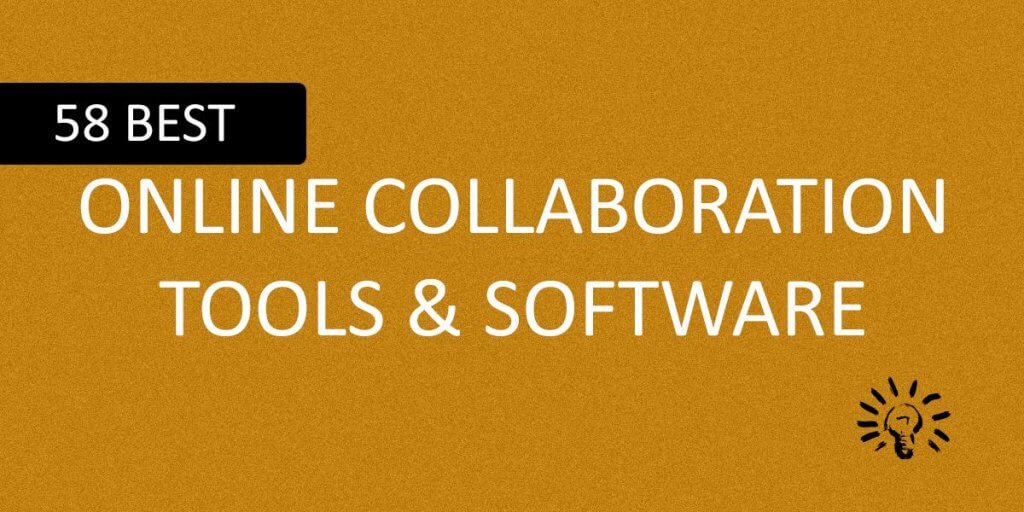Guess what? The market is full of software services designed specifically for the search engine optimization process. Of course, SEO software programs offer a lot of features that can be overwhelming for many rookies.
For instance, using Ahrefs or SEMrush can be quite a daunting task for those who are venturing into the SEO turfs for the first time. Undoubtedly, they are the most powerful SEO software programs available, because of the very fact that they are laden with too many features, people can easily get overwhelmed.
This is where many other players came into the market to help things simplify for people. One such tool is KWFinder.
Interestingly, KWFinder is not a single tool. It belongs to a family of tools offered by a company called Mangools.
Mangools has carved a niche for itself for being one of the simplest SEO toolkits available today. The KWFinder is one of them. It is super simple to use, and it does a good.
Why did I say good, not great?
You will find out.
In this review we are going to learn the following:
- A walkthrough of the tool.
- Different filters you can set.
- Other features of KWFinder.
- Pricing.
That’s it! There isn’t much to speak about the tool simply because the tool is geared towards one thing – finding keywords. So, do not expect much out of it.
Having said that, you can definitely use the KWFinder to find an awesome collection of long tail keywords that can help you quickly rank.
So, let us begin!
KWFinder Walkthrough
First thing first, register for KWFinder and purchase a subscription. It is not a free tool. So, you need to pay. I will cover the pricing later.
Once you subscribe and register, you will get access to this premium tool. Just log in.
When you login for the first time, you will be greeted with this screen:
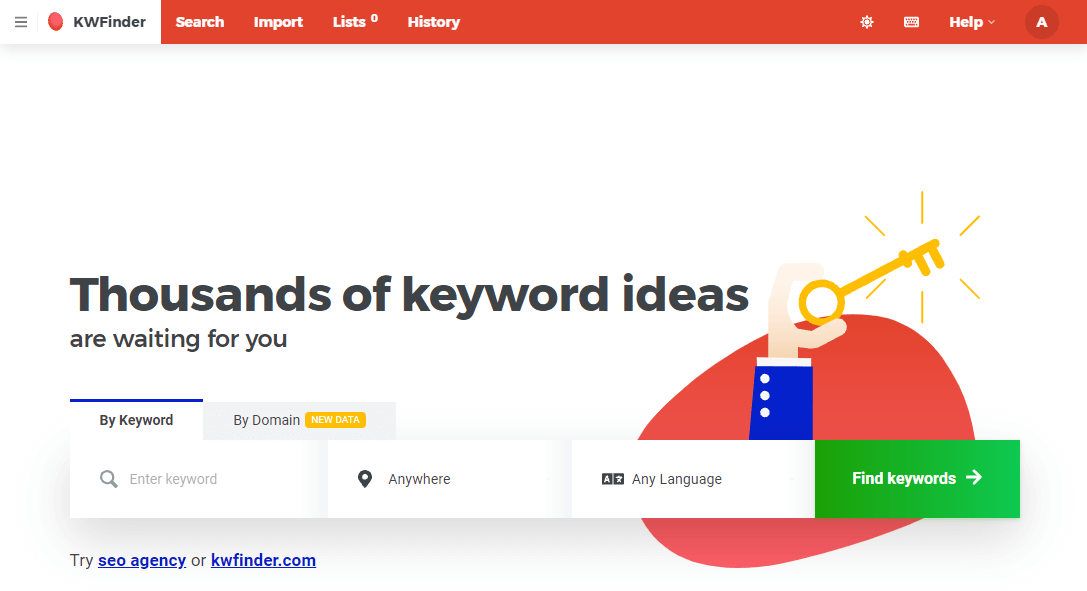
Search by Keyword
This is where you enter your desired keyword, select the location, select a language and then, hit the ‘Find keywords’ button.
Yes, it is as simple as that.
Now, depending on your preferences, selecting the location and the language is important.
For instance, I always select the location in the United States for obvious reasons. The US is a gold mine. You get one of the highest CPCs for US visitors. Also once I am done with the US, I move on to look for the UK, Australia, Canada, and several other tier-1 countries that are known for high CPC.
You will definitely want to do that if you are targeting a global audience. However, if your business is a local business, you should set the location accordingly.
Also, the language is important. It supports many languages (but not all languages). Select the one that suits you the most.
Search by Domain
If you notice, you will also see that the tool allows finding keywords by domain.
What does that do?
It helps you to find the keywords your competitor is using and the keywords your competitor is ranking for in different countries.
How cool is that?
I really like this feature, because it helps you to not only keep an eye on what your competitor is doing, but also helps you to plan your content and SEO strategy properly.
To use it, just enter the domain you want to watch, select the location and hit the ‘Find Keywords’ button.

Now, depending on your business strategy, you might not always need to look up for the keywords your competitors are ranking for. However, for most businesses, this is an important aspect of their SEO efforts. Thus, this tool is an important addition in KWFinder.
Keyword Search Results
Now, the next thing to do is to actually look up for a keyword. For instance, I searched for a longtail keyword – ‘Can Cats Eat Chocolate?’
Well, I have three cats at home, so I guess that keyword makes sense for me. I also selected the location to be the United States and the language to be English.
Once I ran the search, I found an assortment of data.
Here is what you will see:

On the left you will see the results for the keywords you searched for. On the right, you will see the keyword difficulty score and top competing pages with their domain authority, page authority, and more.
Let us take a look at the individual panes.
The Left Pane

Here you can see the following:

Related Keywords: This is the first thing you will notice. Your actual keyword – the one that you searched for – sits on the top. Following that is a list of various related keywords.
Autocomplete: This will show you the list of autocomplete keywords that Google shows when you start typing something into the Google search bar on your browser.
Questions: This will give you a list of the People Also Ask questions from the People Also Ask box that Google shows in its search results.

Filters: On the top left side, you will see the option to turn on filters. You can use the filters to drill down further and get the exact results.
Total Keywords and Export Function:

At the very bottom, you will notice the total number of keywords that the KWFinder found for you. From the image above, you can see that it found 215 keywords in total. Also, at the bottom, you will find the options for exporting those keywords or adding certain selected keywords to a list.
Also notice that for each keyword you will find the following data:

- Search: It gives you the search volume.
- CPC: It gives you the cost per click data.
- PPC: Pay per click shows you the level of competition.
- KD: Keyword difficulty shows how difficult it is to rank for that keyword. The higher the KD value, the more difficult it is to rank for it.
The Right Pane
The right pane shows you the keyword difficulty, average monthly search, trends, top competitors, and more.

Just like the left pane, even the right pane gives an assortment of information that you will find helpful.
Here are the things you will notice here:
Keyword Difficulty
This will show you the difficulty of the primary keyword you typed in.
Monthly Searches
You will see the average monthly searches for the specified keyword for the specific location you have set.
Trends

This will show you the relative popularity of the keyword in Google searches month over month. It is just a graph that gives you some visual indication. However, that visual indication can tell you the months when the search volume sees a jump.
You can always plan your content and other business activities accordingly.
SERP Overview

This shows the top-ranking websites for the seed keyword you have used. Additionally, for each competing website you can see a wide variety of additional information. They include:
DA or Domain Authority: It is a ranking system developed by Moz that shows how well a domain ranks in search results. The higher the score, the better.
PA or Page Authority: It is also a ranking system developed by Moz that shows how well a specific page of a domain ranks in search results. Again, the higher the score, the better it is.
CF or Citation Flow: This is a metric designed by Majestic that shows the link quality. In other words, it will tell you how influential a particular URL is depending on how many sites it is linking to.
TF or Trust Flow: Again, another metric designed by Majestic that shows how trustworthy an URL is. In other words, it perceives the trustworthiness of a website by looking into the quality of its backlink profile. The higher the score, the better it is..
Links: It shows the number of external links the competitor is receiving, the number of external domains linking to your competitor, etc. This will tell you how popular a site is, and you should consider taking a look at their content and the linking domains to get new backlink opportunities.
FB or Facebook Shares: This will show you the number of Facebook shares a particular competing page has received. This is also vital information because it will tell you what kind of content works best for social media.
LPS or Link Profile Strength: This is a metric designed by Mangools. It gives you the overall strength of the link profile of a competing site.
EV or Estimated Visits Per Month: This gives you an estimated number of visitors your competitors receive per month.
Analyze SERP Button

Clicking on this button will take you to the SERPChecker app developed by Mangools where you will get an assortment of additional data in details including DA, PA, CF, TF, Links, FB, LPS, EV, Alexa ranking, referring domains, referring IPs, SERP snapshots from Google, and more.
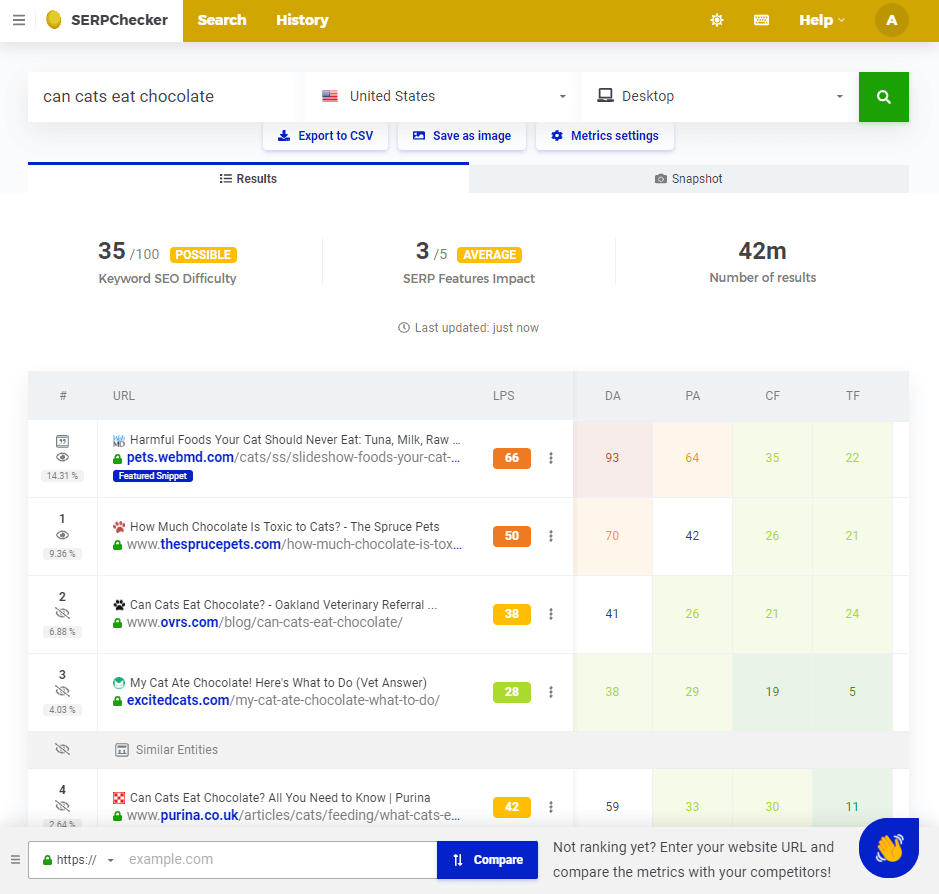
Analyzing the SERPs for your competitors will give you valuable insights into their SEO strategies that help them to rank well on Google searches. You can then replicate their strategies or create something even better to outsmart your competitors.
OVERALL USABILITY: KWFinder is a simple and effective tool that makes it easy for noobs to start performing keyword research with confidence.
KWFinder Filter Options
The KWFinder tool has an interesting feature of setting filters. This allows you to find low competition and high search volume keywords with relative ease.
To use the option, you need to check the left pane of the tool where you will find the filter option as highlighted in the image below:
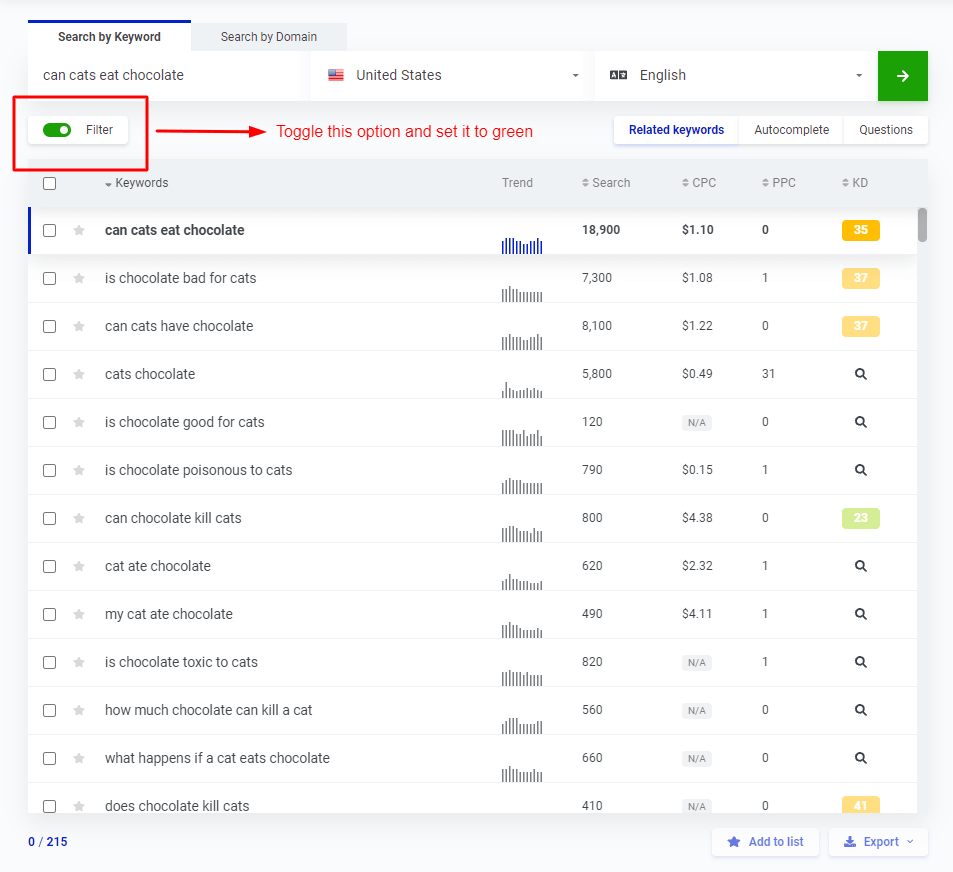
By default, the filter is turned off. You need to toggle it on to use it. Once you toggle the switch, click on the Filter button to pull out the filter options.
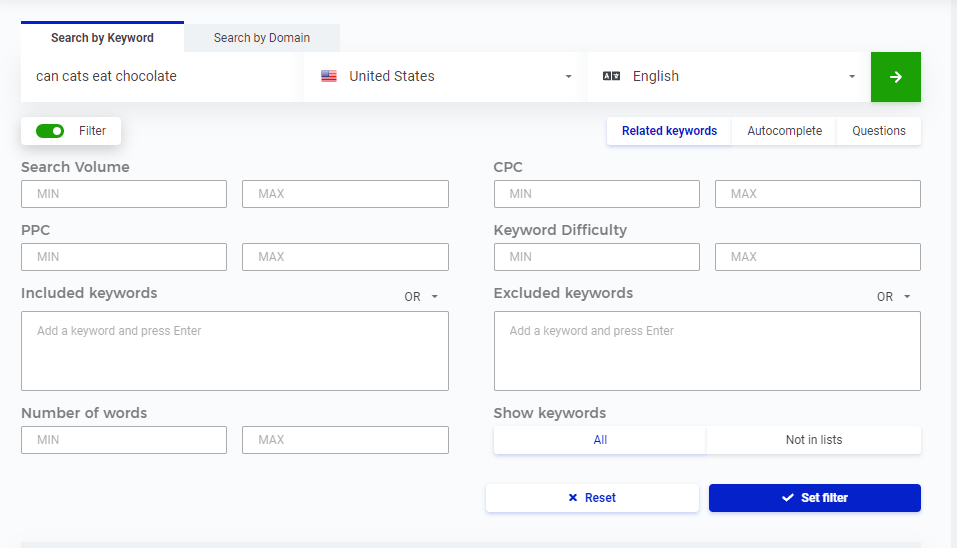
This is where you can set the following filter:
- Minimum and maximum search volume for the keyword.
- Minimum and maximum PPC for the keywords.
- Minimum and maximum CPC for the keywords.
- Minimum and maximum Keyword Difficulty.
Other filters you can set include:
- The keywords that should be included.
- The keywords that should be excluded.
- The minimum and maximum number of words a key phrase should have.
You can also ask the tool to show all keywords or show the keywords that are not shown in the list by default.
These are interesting filters.
If you ask any Search Engine Optimization expert, the person will always suggest you to go for keywords with low Keyword Difficulty, high search volume and high CPC. So, you set the filters accordingly.
These filters will allow you to drill down to the most lucrative keywords for which you can rank easily, get tons of traffic, and make more money through ads.
If you are thinking of spending money on ads, setting the PPC value appropriately will give you the most commercially viable keywords that you can target.
The types of filters you set will definitely depend on your overall marketing goals. So, feel free to play with them as much as you want.
Other Features of KWFinder
While I covered most of the features that the tool has to offer, there are a few others you can look into.
Import Keywords
Look at the top menu and you will see multiple options. One of them is the import option. Clicking on the tab will show you this page:
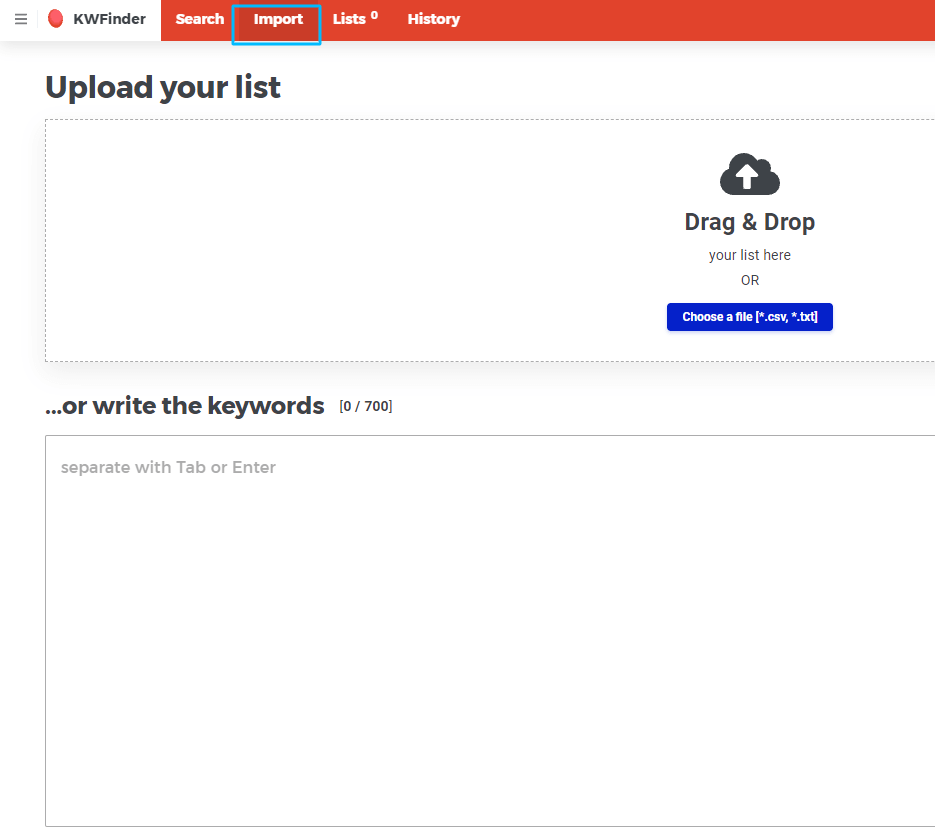
This tool is great if you want to find the details of the keywords you already have, and you do not want to search for keywords using the tool.
You can import the keywords in CSV or TXT format, or you can just enter the keywords manually.
Once you are done, the tool will give you all the necessary stats including keyword difficulty, CPC, PPC, and more.
Lists
This is the next menu item you will find. This segment will allow you to create a list of keywords you want to use. You can just click on the ‘Add to List’ button you see at the bottom of the keywords table by selecting the keywords you want on the list.

Once you do that, the keywords will start appearing in the lists tab. This way, you can keep everything organized until you are ready to export the keywords. Alternatively, you can just use the lists directly from inside the tool.

When you click on “Add to List,” a new popup will appear that will allow you to name and create a new list, or you can just select from an existing list (if one already exists).
This is how the lists look like on the Lists tab:
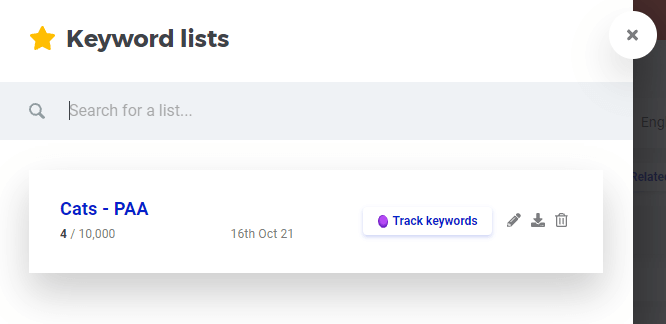
You can download the lists by clicking on the download icon you see next to each list.
Clicking on the list will simply show you the results for the keywords in the list using a left and a right pane divide.
This is how the left pane will look like:

This is how the right pane will look like:

Overall, this is a very nifty feature and I really like it because it fastens the keyword research process significantly.
History
The History tab will show you all the keyword research history.
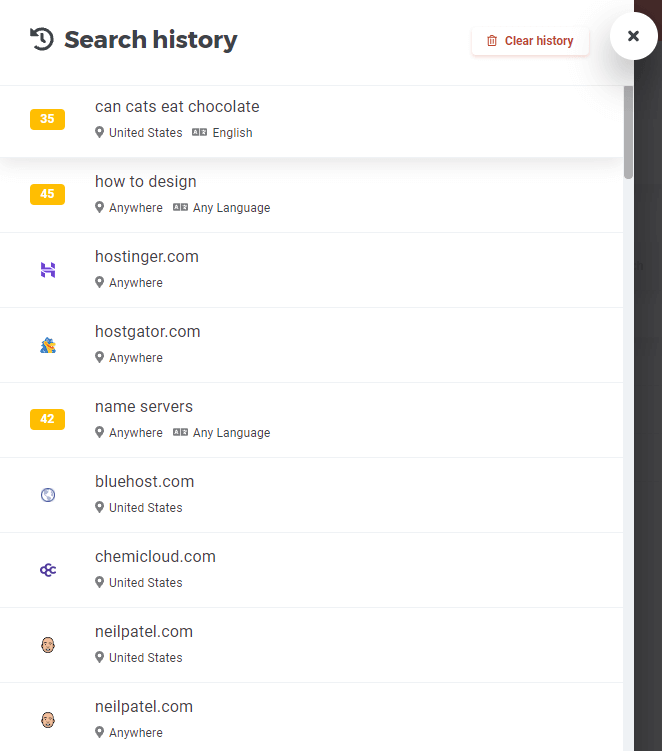
This is ideal for many situations. For instance, you can go back to a previous search and change the search parameters to get a more focused data set for your business strategy.
Dark Mode
Now, this isn’t exactly a great feature. It is only a visual thing. If you want a dark them for the tool, you can do that by simply toggling an icon on the top right corner of the header menu.

This is how the dark mode interface looks like:
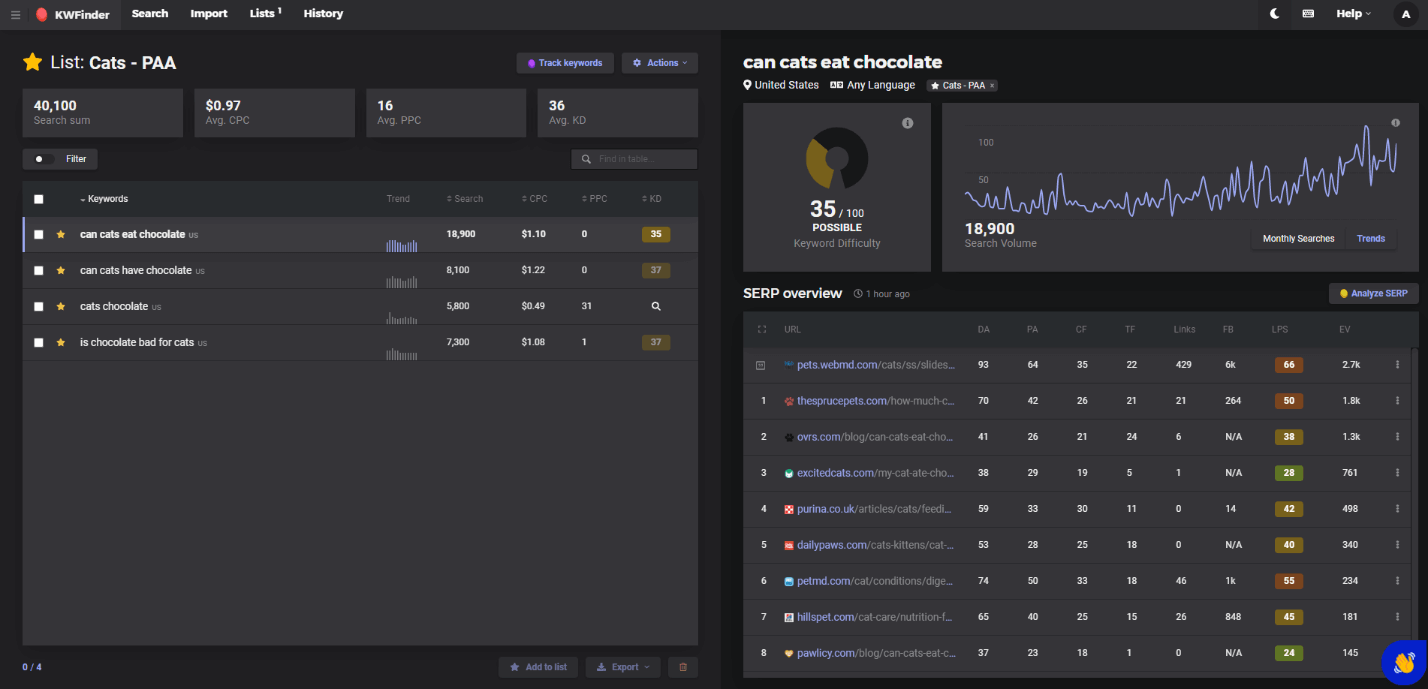
Maybe it is just me, but the dark mode seriously sucks for this tool. It is quite painful to look at this dark mode. But again, who am I to judge your preferences? You may actually like it.
Account Details
Finally, you can get a quick overview of your account limitations and other details about your account from the profile segment. It is only a small icon on the top right-hand corner. Just click on it and all the details will show up quickly in a dropdown panel.

You will get a quick overview of keyword lookups, SERP lookups, Site lookups and Backlink rows allowed per day and per month for your plan. It is an interesting way to showcase all the important limitations of your account in a single place.
KWFinder Pricing
There is no special pricing for KWFinder. When you purchase a subscription, you must purchase it for all available tools provided by Mangools.
There are three pricing plans available with following features and limitations:
Mangools Basics
Yearly Price: When you go for a yearly billing cycle the rate will be $29.90 per month, billed once per year with a total payment of $358.80.
Monthly Price: You will be billed once every month and you must pay a price of $49 per month.
Features included:
- 100 keyword lookups every 24 hours.
- 200 keyword suggestions every search.
- 25 competitor keyword lookup every search.
- 100 SERP lookups every 24 hours.
- 200 tracked keywords a day.
- 100,000 backlink rows per month.
- 20 site lookups every 24 hours.
- Only one simultaneous login per account (that is, you cannot login into your account from more than one device).
Mangools Premium
Yearly Price: When you go for a yearly billing cycle the rate will be $39.90 per month, billed once per year with a total payment of $478.80.
Monthly Price: You will be billed once every month and you must pay a price of $69 per month.
Features included:
- 500 keyword lookups every 24 hours.
- 700 keyword suggestions every search.
- Unlimited competitor keyword lookup every search.
- 500 SERP lookups every 24 hours.
- 700 tracked keywords a day.
- 500,000 backlink rows per month.
- 70 site lookups every 24 hours.
- Three simultaneous login per account (that is, you can login into your account from up to three devices).
Mangools Agency
Yearly Price: When you go for a yearly billing cycle the rate will be $79.90 per month, billed once per year with a total payment of $958.80.
Monthly Price: You will be billed once every month and you must pay a price of $129 per month.
Features included:
- 1,200 keyword lookups every 24 hours.
- 700 keyword suggestions every search.
- Unlimited competitor keyword lookup every search.
- 1,200 SERP lookups every 24 hours.
- 1,500 tracked keywords a day.
- 1,200,000 backlink rows per month.
- 150 site lookups every 24 hours.
- Ten simultaneous login per account (that is, you can login into your account from up to ten devices).
Advantages and Disadvantages of KWFinder
Just like every other keyword research tool, Mangools has its own set of pros and cons. So, let us quickly go through them.
Advantages of KWFinder
- It is a very useful simple tool with a very clean interface, making it easy for even noobs to use it and understand it on the first try.
- Offers a lot of interesting features that can be used for evaluating competitors’ SEO strategies.
- Allows interesting filter options to quickly find keywords with low difficulty and high search volumes.
- Offers valuable insights into competitors’ SERP results.
- They offer a 10-day free trial and a 48-hour money back guarantee.
Disadvantages of KWFinder
- It will not allow you to get a competitive view of the global search volume and location-specific search volume in a single search. You must do that separately. This eats up the keyword lookup limit. This feature is available in Ahrefs without additional costs.
- The paid plans are very expensive considering the fact that the limitations are stifling. Tools like Ahrefs and SEMrush have higher limitations.
- The number of keywords it churns out is quite less compared to what Ahrefs gives for the same keyword.
- It will not allow refreshing keyword data on demand – a feature that is available with Ahrefs.
Conclusion
Overall KWFinder is a powerful tool and is quite easy to use. The interface is brilliantly designed, making it a perfect choice for people who are trying to perform keyword research for the first time. I must say that the interface is easier than Ahrefs.
However, considering Ahrefs’ ability to drill deeper into keywords and backlink profiles of competitors, makes it a more powerful tool than Mangools. Still, if you don’t have the budget to pay for Ahrefs, Mangools’ KWFinder is a great place to start. Still undecided? Try KWfinder for free

